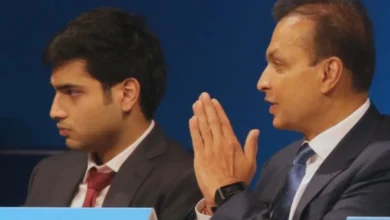ISRO espionage case: SC to hear matter next week

The Supreme Court Monday said it would hear next week the 1994 espionage case relating to ISRO scientist Nambi Narayanan in which a high-level probe panel appointed in 2018 has recently filed its report.
The apex court had on September 14, 2018 appointed the three-member panel, headed by its former judge Justice (retd) D K Jain, while directing the Kerala government to cough up Rs 50 lakh compensation for compelling Narayanan to undergo “immense humiliation”.
It had ordered setting up of the committee to take appropriate steps against the erring officials for causing “tremendous harassment” and “immeasurable anguish” to Narayanan and had directed the Centre and state government to nominate one officer each in the panel.
The matter was mentioned for urgent listing before a bench headed by Chief Justice S A Bobde.
Solicitor General Tushar Mehta told the bench, also comprising Justices A S Bopanna and V Ramasubramanian, that a report has been filed and it is a national issue .
The bench said it understands that it is an important matter but not a very urgent matter .
We will take it up next week, the bench said.
Terming the police action against the ex-scientist of the Indian Space Research Organisation (ISRO) as a “psycho-pathological treatment”, the apex court had in September 2018 said that his “liberty and dignity”, basic to his human rights, were jeopardised as he was taken into custody and, eventually, despite all the glory of the past, was compelled to face “cynical abhorrence”.
The espionage case, which had hit the headlines in 1994, pertained to allegations of transfer of certain confidential documents on India’s space programme to foreign countries by two scientists and four others, including two Maldivian women
The scientist was arrested when the Congress was heading the government in Kerala.
The 3-member investigation panel submitted its report in a sealed cover to the apex court recently.
The CBI, in its probe, had held that the then top police officials in Kerala were responsible for Narayanan’s illegal arrest.
The case also had its political fallout, with a section in the Congress targeting the then Chief Minister late K Karunakaran over the issue, that eventually led to his resignation.
Over a period of almost two-and-a-half years, the panel headed by Justice Jain examined the circumstances leading to the arrest.
The 79-year-old former scientist, who was given a clean chit by the CBI, had earlier said that the Kerala police had “fabricated” the case and the technology he was accused to have stolen and sold in the 1994 case did not even exist at that time.
Narayanan had approached the apex court against a Kerala High Court judgement that said no action needed to be taken against former DGP Siby Mathews, who was then heading the SIT probe team, and two retired superintendents of police K K Joshua and S Vijayan, who were later held responsible by the CBI for the scientist’s illegal arrest.
“There can be no scintilla of doubt that the appellant, a successful scientist having national reputation, has been compelled to undergo immense humiliation. The lackadaisical attitude of the state police to arrest anyone and put him in police custody has made the appellant to suffer the ignominy, the apex court had said in its September 2018 order.
“The dignity of a person gets shocked when psycho-pathological treatment is meted out to him. A human being cries for justice when he feels that the insensible act has crucified his self-respect,” the top court had said.
It had accepted Narayanan’s plea that the authorities, who were responsible for causing such a “harrowing effect” on his mind, should face “legal consequences”.
The CBI, while giving clean chit to the scientist, had said that Siby Mathews had left “the entire investigation to IB surrendering his duties” and ordered indiscriminate arrest of the scientist and others without adequate evidence being on record.
The case had caught attention in October 1994, when Maldivian national Rasheeda was arrested in Thiruvananthapuram for allegedly obtaining secret drawings of ISRO rocket engines to sell to Pakistan.
Narayanan, the then director of the cryogenic project at ISRO, was arrested along with the then ISRO Deputy Director D Sasikumaran, and Fousiya Hasan, a Maldivian friend of Rasheeda.




